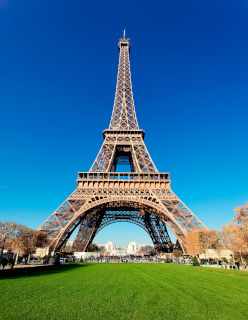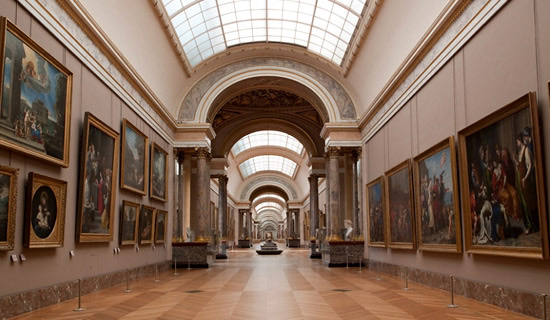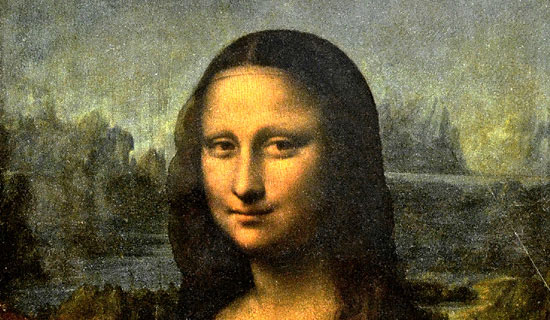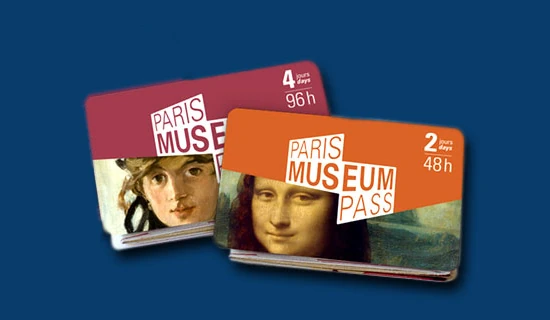The museums of Paris
Cultural destination par excellence, Paris has countless museums, the major international institution to little unusual museum that very few people know... There's enough to spend several days on the museums of Paris.
To see a little clearer in over 130 museums sheltered by Paris, here's a quick round of the most famous museums in Paris :
- Lovers of art and architecture will head to the inevitable Louvre, the Orsay museum and its fantastic collections or Maillol Museum...
- The exhibitions of modern or contemporary art are rather spring from the Pompidou Centre or the Pinacoteca of Paris.
- For lovers of civilization and culture, the Quai Branly Museum, the Arab World Institute and the Guimet museum is to visit first.
- In science, there is the Cité des Sciences de La Villette or the Palace of Discovery...
Note also, for the photo the Jeu de Paume museum for music Cité de la Musique, Paris in the history of the Carnavalet Museum...
To address particular artists, we retain the Dali museum in Montmartre, the Musée Delacroix, Picasso Museum or the Rodin museum... but also exhibitions of the Grand Palais, which in each event attracts large numbers of visitors.
Museums reflect the history and cultural richness of the capital. This legacy, the City of Paris retain, expose it and make the share more, either by the permanent collections or temporary exhibitions. You will understand, whatever their age or tastes, there is something for everyone!
The Louvre Museum
Located in the heart of Paris in the former residence of the kings of France, discover the wonders of the largest museum in the world and its treasure of over 35,000 works : The Louvre Museum.
During your visit, you will cross the history and the world through the greatest masterpieces of the Louvre. From the medieval fortress to the universal museum, this tour traces the history of the royal palace and offers a route around the masterpieces of the museum collections : Mona Lisa, Venus de Milo, the Winged Victory, the Apollo Gallery the Coronation of Napoleon...
With 210,000 sqm of which 60,600 devoted entirely to exhibitions and its 10 million annual visitors, the Louvre is one of the three most important museums in the world and the 3rd most visited monument in Paris behind the Cathedral Notre Dame de Paris and the Sacred Heart Basilica. Not to get lost in the corridors of history, here are some ideas !
The Louvre brings together outstanding collections from many cultures from antiquity to 1930. The Louvre collections are spread over 2 floors, a ground floor and a mezzanine. Each floor is divided into three wings :
- Denon wing
- Sully wing
- Richelieu wing
Visiting the Louvre museum is structured around 8 departments or collections:
- Eastern antiquity : From Prehistory to the early Islamic era, the Louvre of Oriental antiquities collections include various North African territories to the borders of the Arabian Peninsula.
- Egyptian antiquity : Department that was once called the Egyptian Museum, he became the curator Jean -François Champollion. Today, the Egyptian Antiquities are spread over three floors: on the mezzanine, the Roman Egypt and Coptic Egypt ; the ground floor and first floor, Pharaonic Egypt.
- Greek and Roman Antiquity : In this department is a broad overview of ancient art from Greece, Italy and the entire Mediterranean basin, that you can admire.
- Art of Islam : In 2003, the Louvre created an eighth department dedicated to the arts of Islam. New Cour Visconti expect the future department and its nearly 3,000 works.
- Sculptures : A department which has the largest collection in the world of French sculptures and masterpieces of Italian and German sculpture.
- Arts Object : A department consists of jewelry, statuettes, furniture and tapestries dating from the Middle Ages to the mid-nineteenth century.
- Paintings : Italian and French primitives, major French paintings of the Romantic school, Dutch painting of the seventeenth century... Prestigious department that extends from the thirteenth century to 1848.
- Prints and Drawings : A fragile collection of drawings, pastels, miniatures, prints, books, manuscripts... Who can not be permanently exposed to light. Works that can be admired during temporary exhibitions.
Main masterpieces to discover at the Louvre Museum
You have to visit the Louvre in two or three times, or more, to really do the trick. If you only have a few hours, this is a feasible circuit to see the most famous masterpieces of the Louvre.
- First enter the wing by Tenon, you will come face two statues of Michelangelo : The Dying Slave and The Rebellious Slave. This is a work in marble depicting two naked men, for the tomb of Pope " patron " Julius II.
- Room 10, stop in front of the very moving Raft of the Medusa by Géricault. The characters are adrift when comes a hope : a boat in the distance. Waves, makeshift sail, the suffering of the leading characters gently lead our gaze to the white tissue, restless to be saved dark and devastating waves.
- In Room 8, French painting of the eighteenth century immerses you in the story. The Coronation of Napoleon David is just as interesting artistically and politically. Napoleon actually did control this table asking to put on and remove some characters. Thus appears in the center, his mother refused to attend the ceremony, or the Ambassador East at the bottom right, which has not been allowed to enter the cathedral. Initially, Napoleon had chosen to be represented in the process of self- crowned emperor before opting for the coronation of Josephine that she preferred to award the young face of his daughter to capture on canvas...
- Then head to the stairs and therefore towards the Victory of Samothrace, you can not miss the winged goddess Nike, a sculpture of 5.57 m in height from the Hellenistic period, representing the victory, placed on the bow of a ship.
In the room under the Winged Victory, you can admire the famous Venus de Milo.
- Continue down the long corridor of Italian paintings. On the left you will come to blissful Saint Anne, the Virgin and Child by Leonardo da Vinci.
- Finally here, the Mona Lisa (or Portrait Mona Lisa), the famous painting by the Italian artist Leonardo da Vinci, realized between 1503 and 1506, which represents a half-length portrait, probably one of the Florentine Lisa Gherardini, wife of Francesco del Giocondo.
The Mona Lisa has become a world famous picture because since its completion, many artists have taken as reference. In the Romantic era, artists have been fascinated by the enigma of the Mona Lisa and helped develop the myth that surrounds it, making the table one of the most famous works of art in the world, if this is the most famous.
In the Carrousel gallery ( access point to the Louvre Museum), you will find shops, restaurants, bookstores and museum.
Every evening at dusk, the Louvre Pyramid lights. You can combine your visit with an evening stroll in the Tuileries gardens.
The Orsay Museum
Housed in the former Orsay railway station that looks like a palace and inaugurated for the Universal Exhibition of 1900, the Musée d'Orsay is one of the most prestigious museums of Paris after the Louvre ; with over 3 million visitors annually, it is one of the world's top ten museums.
Known worldwide for its rich collection of Impressionist art, the Musée d'Orsay is also the museum any artistic creation of the western world from 1848 to 1914. Its collections represent all forms of expression, from painting to architecture, through sculpture, decorative arts, photography.
In late 2011, the museum reopened all of its spaces, completely renovated, with new rooms : additional 400 m² for upstream pavilion, artists Post-Impressionism in the heart of the museum, the restructuring of the Impressionist Gallery, a new space temporary exhibition without forgetting the new decor "aquatic" coffee heights entrusted to two Brazilian designers the Campana brothers.
Discovering the Orsay Museum
The Musée d'Orsay, smaller than the Louvre is still impressive and has the largest collection of Impressionist works in the world (Renoir, Monet, Manet, Van Gogh...). Among the great works held in the Musée d'Orsay, many have marked the history of art by the break they have marked, daring or avant-garde they have shown.
You will need several visits of 3-4 hours for roughly discover the various exhibitions. We have therefore prepared a list of the essential works of the Orsay museum that you can visit with your personal guide :
- L'Angélus, 1858, Jean-François Millet (1814-1875), for the soft light emanating from this stage of contemplation and for this valuable testimony of peasant life of the nineteenth century.
- Un enterrement à Ornans, 1849-50, Gustave Courbet (1819-1877), because this huge canvas so decried, described as vulgar, became an obvious work of Realism with Courbet was the leader.
- La Danse, 1865-1869, Jean-Baptiste Carpeaux (1827-1875), because this whirling medley sculpted women, far from leaving us with marble, leads us into the movement of dance.
- Olympia, 1863, Edouard Manet (1832-1883), for extreme provocation that the work is never before the nude had been used to describe such a simple prostitute realism of the Second Empire.
- Porte de l'Enfer, entre 1880 et 1917, Auguste Rodin (1840-1917), because this work symbolist, which reflects so well the power of expression of the human body between shadow and light, allows complete freedom to the imagination.
- Petite danseuse de 14 ans, entre 1875 et 1880, Edgar Degas (1834-1917), for the grace of this little ballerina in pink tutu indicating a hyperrealism.
- Portrait de l'artiste, 1889, Vincent van Gogh (1853-1890), to face the look of the engineering features are hard and emaciated and whose anxiety is palpable.
- Cathédrale de Rouen, 1892-1894, Claude Monet (1840-1926), because this series reflects the obsession of the artist to capture the constantly changing light and atmospheric changes in his painting.
- La femme à la cafetière, vers 1895, Paul Cézanne (1839-1906), because the massive portrait geometrized volumes, almost without perspective, announces Cubism.
- Le Talisman, l'Aven au Bois d'Amour, Octobre 1888, Paul Sérusier (1864-1927), because after this tiny piece of fabric where each element is represented by a color job, nothing will be as before.
The themed visits
To optimize your visit to the maximum, you can expect a themed set that will guide your journey
- Votre fille se voit petit rat de l'Opéra ? Voici des oeuvres autour de la danse à lui faire découvrir : Les danseuses de Degas (sculptures et peintures), Danse à la ville ou Danse à la campagne de Renoir pour voir les danses de salon en habit du dimanche du XIXème siècle, les cabarets de Toulouse-Lautrec pour découvrir la Goulue et les spectacles du Paris 1900, les danseuses espagnoles avec leur castagnettes de Roig y Soler, les danseuses orientales de Paul Bouchard (Les almées), les statues de Gauthier, les photos de De Meyer...
- Si la passion de votre petit garçon est le grand large et les bateaux, voici de quoi le contenter : Les régates à Perros-Guirec de Maurice Denis, La nuit étoilée de Van Gogh, Le soleil dans la maison de Henri Le Sidaner, des ports de Renoir, Boudin ou Sisley, le bord de mer vu par Whistler (Variations en violet et vert), La Seine de Gauguin, les voiliers d'Argenteuil de Caillebotte ou de Monet, La mer orageuse de Courbet, Le retour de la pêche de Sorolla, La voile verte ou La bouée rouge de Signac...
- De plus, vous ne pouvez pas visiter le Musée d'Orsay sans voir des toiles qui ont fait la révolution en leur temps : Le Déjeuner sur l'herbe d'Édouard Manet ; L'Origine du monde ou Les raboteurs de parquet de Gustave Courbet; La maison du pendu de Cézanne qui a été présentée à la première exposition des impressionnistes...
You will understand there are larger, and above all Bonnard, Boudin, Caillebotte, Eugene Carriere, Cezanne, Corot, Courbet, Degas, Maurice Denis, Henri Fantin -Latour, Gauguin, Manet, Millet, Monet, Pissarro, Renoir Seurat, Signac, Sisley, Toulouse-Lautrec, Valloton, Van Gogh, Vuillard...







